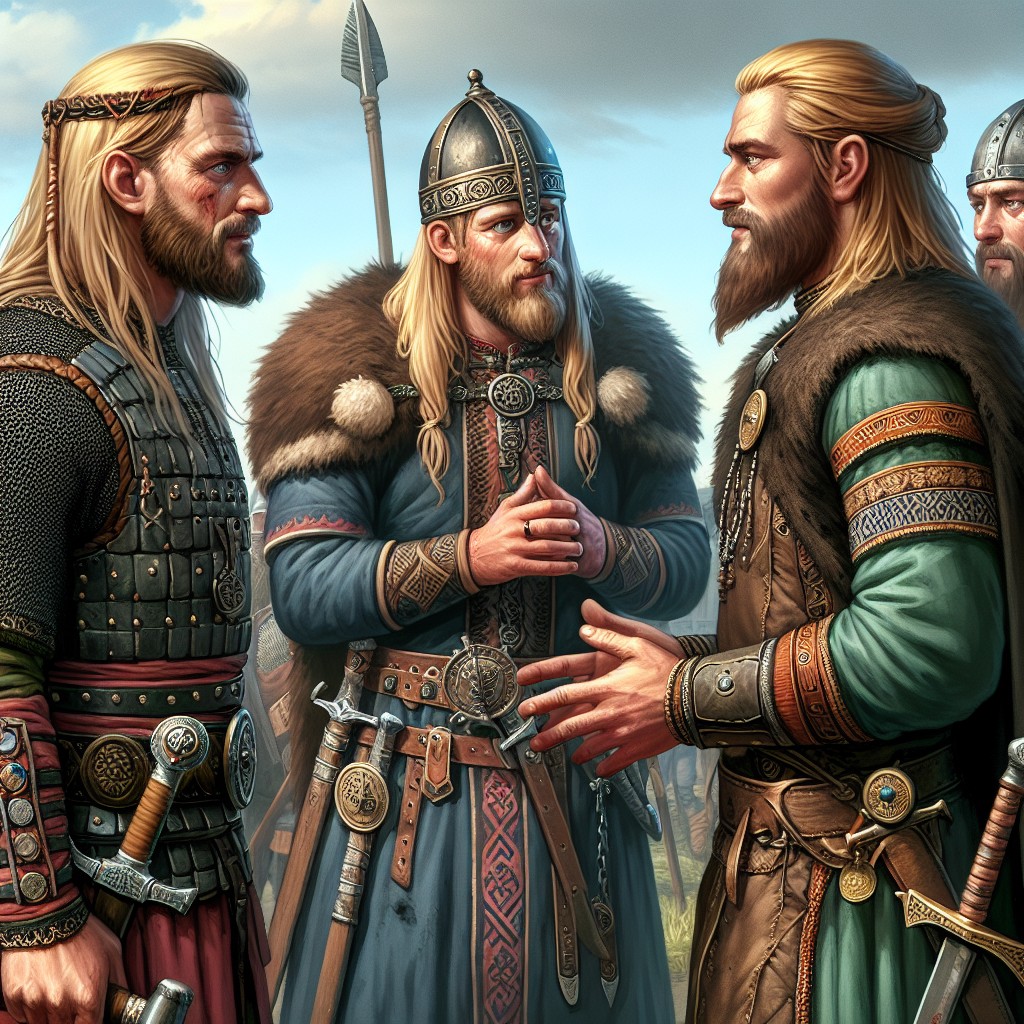Saxon Humor
A joke worth a kingdom

King Harald III and Jarl Tostig in conversation with two Saxon envoys – AI-generated image
Before the Battle of Stamford Bridge in 1066, King Harold II Godwinson’s (1022–1066) Saxon army sent a delegation to meet with the Norwegian army of King Harald III Sigurdsson (1015–1066), who had just invaded England to claim the throne based on alleged dynastic rights. Alongside the Norwegian king was Tostig, Harold’s rebellious brother, who led the negotiations. Rejecting his brother’s offer of pardon, Tostig asked the Saxon spokesperson what compensation Harald would receive for his rightful claim over English lands. He was told: “[King Harold] said something about how much English land he would grant him: King Harald will have two meters, or as much more as he needs, given that he’s taller than other men.”
This was, of course, a pointed jest made by King Harold himself, disguised as a messenger, hinting that the only land Harald would receive would be his grave—two meters of English earth. The message made it clear that there would be no surrender to the Norwegian invaders. Tostig, keeping his brother’s identity concealed, didn’t inform Harald of the messenger’s true identity, knowing that revealing Harold would lead the Norwegian king to kill him on the spot, thus ending the conflict instantly. Instead, Tostig waited until the envoy had departed. The Norwegian king, embodying the true Viking spirit, admired the dual loyalty Tostig showed both to him as his lord and to his brother as family. He also appreciated Tostig’s courage, recognizing that their fate was now sealed.
This brief exchange highlights how both Saxons and Vikings, whose cultures shared similarities, could find humor even on the brink of battle and exhibit values and wit that were foreign to much of medieval Europe.
In the end, Harald III and Tostig would both fall at Stamford Bridge, marking the end of the Viking era in England.
Harold, on the other hand, would meet his end shortly after at the Battle of Hastings in 1066, against William “the Conqueror,” marking the end of the Saxon age and the beginning of Norman rule on the island.
Tom Shippey, Laughing Shall I Die: Lives and Deaths of the Great Vikings, Reaktion Books, 2020
Donal F. Logan, The Vikings in History, Routledge, Feb. 1992
2025-09-13
Salvatore Ciccarello
